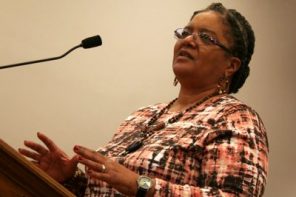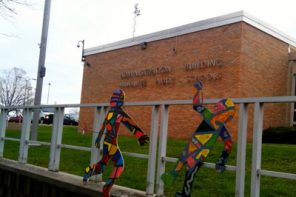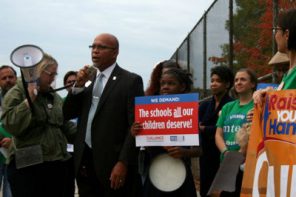Defying expectations, I will write nothing this week about mass shootings. Instead, I’ll be writing about something that doesn’t happen every day: bi-partisan Congressional action on an education reform bill.
Indeed, that sort of thing hasn’t happened since this year’s high school seniors were just barely out of diapers, when Congress passed the No Child Left Behind bill in 2002.
Hindsight has left all of us pretty much in agreement that NCLB didn’t work as promised. According to the National Assessment of Educational Progress, the closest thing we have to a national report card, the students we are graduating now don’t read or do math much better than they did when NCLB was passed. 17-year-olds improved their reading scores by a meager four points in reading between 2004 and 2012 (from 283 to 287); in math over that time, scores went up exactly one point, from 305 to 306.
ACT and SAT scores also haven’t moved since NCLB. Graduation rates are a bit better now than they were then, but the gap between how well our white and non-white students do, though somewhat better, is still this nation’s greatest shame – even more than “Toddlers and Tiaras” and the Palin family.
Why? There are two easy answers. One is that maybe we are bumping up against the limits of what a still-growing teenage brain can handle, that we may well be getting closer and closer to the point where every child actually is, as in Lake Woebegone, above average. Our kids today are leaving school significantly smarter than they did 30, 40 or 50 years ago, but their improvement really plateaued overall before NCLB was passed. 1983’s “A Nation at Risk,” the report that started the whole school-reform panic, was simply wrong in its assessment at the time that US schools were not doing well and not improving, since by 1983, the country was in the middle of a massive rise in overall, across-the-board student achievement.
The other easy answer is that the policy changes that came with NCLB were the wrong changes. That is, what NCLB demanded of states, districts, schools, teachers and students are things that actually don’t matter, that don’t mean a hill of beans when it comes to making sure our children are learning. If you recall – and it’s been so long now that I can understand if you don’t – NCLB really made three major changes to How It Used To Be.
First and most intrusively was its aggressive testing and reporting regime. On the one hand, new rules made schools admit what for years they could hide, which is that even in great schools, students with disabilities and students of color were not doing as well as their white peers. On the other hand, though, we’ve raised a generation of students for whom days and days and days of standardized testing is normal, and testing is a two billion-dollar industry. Testing companies get many billions more selling books and software, and spend tens of millions annually lobbying Congress and states to keep using their products.
Second was its accountability provisions, which demanded that states identify and punish schools with the worst achievement. The punishment could include anything from helping parents leave the public schools for private schools (ones often exempt from the testing and reporting requirements) or competing public ones, to closure or reconstitution of the failing schools. Hundreds of schools have been “turned around” over the last decade because of NCLB.
Third was making sure that all classrooms had a “highly qualified” teacher in them, with some changes in how teachers were trained or licensed. Many of those provisions have subsequently been subverted by emergency certification procedures and groups like Teach for America that put untrained, novice teachers into classrooms in the neediest schools.
As noted, none of these three things, in the aggregate, have done much to move the needle.
Now, a smart Congress would look at this and say, “Whoa, maybe we should rethink that!” and undo a lot of what NCLB did. So what’s in the new bill, the one that passed the House last week and is expected to sail through the Senate soon to President Obama’s desk where he will happily sign it?
I gave it away when I said “smart Congress,” didn’t I? That’s right: the Every Student Succeeds Act, which, besides the equally Orwellian name, takes much of what NCLB did and makes it a double.
To be fair, this is not true across the board. ESSA returns much of the accountability authority to states, which will give the states more flexibility in how to deal with schools that aren’t living up to expectations.
But the testing component remains, despite protestations from people like Obama that our kids are tested too much. Everything negative about the testing-industrial complex will remain; this is what good lobbying can buy you. Well, not you, personally, but these large companies that suck our tax dollars and profit on the backs of our kids and teachers.
States will have to consider other things besides just the tests in deciding which schools are failing – school climate, for example – and they won’t be able to rely solely on test scores for teacher evaluation. But the yearly testing ritual will proceed apace.
The bill also codifies a lot of the alternative-certification procedures that will weaken the ability of states to keep high standards for teacher preparation and make it ever more inevitable that high-poverty schools, with the students most desperately behind and most in need of adults who know what they’re doing, don’t get the best teachers.
Is ESSA an improvement over NCLB? Maybe, in the way that, say, romaine lettuce is an improvement over iceberg lettuce when what you really need is some protein.
But there actually are a lot more than just two possible answers to the question of why scores aren’t any better today than they were pre-NCLB. Everything above is true; I do think we’re really pushing the limits of what our kids can learn and, as I’ve written before, what’s called for in the Common Core State Standards is far beyond what students were expected to know and do in previous generations (many of those skills just aren’t tested, or even testable). And it’s also true that the kinds of threats in NCLB’s accountability provisions – and their successors from Obama’s “Race to the Top” – just haven’t proven effective.
But other things are true, too. One is that spending on our schools, which steadily increased as national test results did in previous generations, has plateaued with the scores. Throughout the 2000s, federal spending stayed flat and is lower today, in today’s dollars, than in 2002 when NCLB was passed. States have cut back too, with many states still trying to get back to pre-Great Recession spending levels.
Another thing is that we’re educating more non-white and non-rich students in our schools, because our population is changing and our dropout rate is lower. Even as these groups improve – and they have over the years – their scores are still lower than their majority peers, and the fact that they make up a greater percentage of our students keeps overall scores kind of flat. You get what you pay for.
Mostly, though, I think we are at a moment in history where how we teach students needs to change if we’re going to get any improvement in how well they do. It’s getting easier and easier to make sure every child has a personally designed education plan – indeed, some local schools are leading the way in figuring this out – that the status quo of mass testing, strict graduation rate rules and textbook lobbyists can’t handle.
It doesn’t make any sense to reify principles that were already mostly outdated by the time they were passed in 2002 so many years later. If Congress wanted to do ESSA right, they would make it easy – no, mandatory – to educate 21st century children in a 21st century way.
Instead, Congress is going to keep acting like it’s not just still 2002, but still 1983. And that’s no good for anyone, especially our children.


 i evaluate to yes even if there's no image
i evaluate to yes even if there's no image  i evaluate to yes even if there's no image
i evaluate to yes even if there's no image  i evaluate to yes even if there's no image
i evaluate to yes even if there's no image  i evaluate to yes even if there's no image
i evaluate to yes even if there's no image  i evaluate to yes even if there's no image
i evaluate to yes even if there's no image  i evaluate to yes even if there's no image
i evaluate to yes even if there's no image